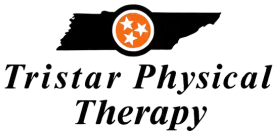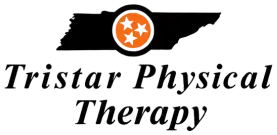Table of Contents
- Understanding Total Knee Replacement Surgery
- Indications for Total Knee Replacement Surgery
- The Total Knee Replacement Procedure
- Recovery Timeline
- Why Physical Therapy Is Important After Total Knee Replacement
- Benefits of Physical Therapy After TKR Surgery
- What to Expect During Physical Therapy
- Timeline for Physical Therapy After TKR Surgery
- Tips to Maximize Your Post-Operative Recovery
- Focus on Your Nutrition
- Take Care of Your Incision Site
- Get Plenty of Rest
- Follow Your Physical Therapy Program
- Conclusion
Total Knee Replacement Physical Therapy: A Comprehensive Guide
Total knee replacement (TKR) surgery is a popular and effective procedure that helps millions of people worldwide relieve chronic knee pain and improve their quality of life. However, successful TKR surgery is just the beginning of the process. To regain full mobility and strength in your knee, you will need to commit to a comprehensive physical therapy program.
In this article, we will take a deep dive into the world of total knee replacement physical therapy. We will cover everything from the basics of knee anatomy and surgical procedures to the specifics of post-operative physical therapy programs.
Understanding Total Knee Replacement Surgery
Before we dive into physical therapy, let’s first take a moment to review what TKR surgery is and why it is performed.
A total knee replacement is a surgical procedure that involves replacing the damaged or worn surfaces of the knee joint with artificial components made of metal, plastic, or other materials. The goal of the surgery is to alleviate pain and improve mobility in people with severe knee damage or degenerative joint disease.
Indications for Total Knee Replacement Surgery
There are several different conditions that may lead to the need for TKR surgery, including:
- Osteoarthritis: A degenerative condition that affects the cartilage in the knee joint and causes pain, stiffness, and reduced mobility.
- Rheumatoid arthritis: An autoimmune condition that causes joint inflammation and can lead to permanent joint damage if left untreated.
- Post-traumatic arthritis: Arthritis that develops following a traumatic injury to the knee joint, such as a fracture or ligament tear.
- Avascular necrosis: A condition where the bone tissue in the knee joint dies due to reduced blood flow, leading to pain and joint damage.
The Total Knee Replacement Procedure
The TKR procedure typically takes between 1-2 hours to complete and is performed under general anesthesia. During the surgery, the damaged portions of the knee joint are removed and replaced with artificial components.
The components include a metal femoral component, a metal tibial component, and a plastic spacer placed between two metal components that serve as the new cushioning surface of the knee joint.
Recovery Timeline
The recovery timeline for TKR surgery varies based on the individual patient’s health, age, and pre-surgical fitness level, among other factors. However, most patients can expect the following recovery milestones:
- Hospitalization: Most patients will remain in the hospital for several days after surgery to receive pain management and physical therapy.
- Healing: The incision site and surrounding tissues will take a few weeks to heal. During this time, patients should avoid strenuous activities that may put undue stress on the knee joint.
- Physical Therapy: Most patients will begin physical therapy within a few days of surgery to target range of motion, strength, and endurance goals. Most physical therapy programs last around 12 weeks, with varying levels of intensity throughout.
- Return to Normal Activities: The goal of TKR surgery is to regain mobility and reduce pain, allowing patients to resume normal daily activities as soon as possible. Most patients will be able to return to their normal daily routine within a few months of surgery.
Why Physical Therapy Is Important After Total Knee Replacement
Physical therapy is an essential aspect of the post-surgical journey for those who have undergone a TKR procedure. The purpose of physical therapy is to help patients regain full mobility, improve muscle strength and function, and reduce pain and inflammation in the knee joint.
Benefits of Physical Therapy After TKR Surgery
The benefits of physical therapy go far beyond merely restoring mobility in the knee joint. Here are some of the primary benefits that patients can experience from a comprehensive physical therapy program:
- Improve range of motion in the knee joint
- Reduce the risk of post-operative complications, such as blood clots or infections
- Decrease pain and inflammation in the knee joint
- Increase muscle strength and function, reducing the likelihood of falls or other accidents
- Improve overall quality of life by allowing patients to resume their normal daily activities
What to Expect During Physical Therapy
Your physical therapy program will be customized to meet your individual needs and goals. However, most TKR physical therapy programs will typically include several key components, such as:
- Range of motion exercises: Slow, gentle stretching and mobility exercises aim to increase your knee’s flexibility.
- Strength Training: Building strength in the muscles around the knee joint can help improve function and reduce pain.
- Endurance Training: Exercises designed to improve cardiovascular fitness and endurance, such as walking or cycling, can help get you back to your regular activities.
- Pain Management: Your physical therapist may use various techniques to help manage pain and reduce inflammation, such as ice therapy or electrical stimulation.
Timeline for Physical Therapy After TKR Surgery
Most physical therapy programs after a TKR procedure will last around 12 weeks, with varying levels of intensity throughout. Here’s a general timeline of what you can expect:
- Inpatient Physical Therapy: Most patients will begin their physical therapy within a few days of surgery while still in the hospital.
- Early Post-Operative Rehabilitation: During the first few weeks after surgery, your physical therapy program will focus on basic range-of-motion exercises to improve knee flexibility.
- Mid-Term Rehabilitation: Around 4-6 weeks post-surgery, your physical therapist will begin incorporating more strengthening exercises to help you regain muscle function.
- Late Rehabilitation: In the final weeks of your physical therapy program (around 10-12 weeks post-surgery), your therapist will focus on getting you ready to return to your everyday activities.
Tips to Maximize Your Post-Operative Recovery
While physical therapy is a vital aspect of TKR recovery, there are several steps you can take on your own to improve your outcomes, reduce your pain, and speed up your recovery time:
Focus on Your Nutrition
Following a healthy, nutritious diet can help speed up your recovery time and improve your overall health. Aim to eat a diet rich in whole, nutrient-dense foods, such as lean protein, fruits, and vegetables.
Take Care of Your Incision Site
Your incision site requires care and attention to heal properly. Make sure to keep the area clean and dry, follow any wound care instructions provided to you by your healthcare provider, and avoid soaking your knee in water until the incision has healed completely.
Get Plenty of Rest
Rest is crucial to allowing your body to heal properly after surgery. Make sure you get plenty of sleep, try to avoid standing or sitting for extended periods, and take regular breaks to elevate your leg and reduce swelling.
Follow Your Physical Therapy Program
Your physical therapy program will be tailored to meet your individual needs, so make sure you follow your therapist’s recommendations. Stick to your exercise schedule as much as possible and let your therapist know if you’re experiencing any pain or discomfort during your sessions.
Conclusion
Total knee replacement surgery is an effective way to reduce chronic pain and improve mobility in people with severe knee damage. However, successful surgery is just the beginning of the recovery journey.
Physical therapy is a vital aspect of the recovery process, offering numerous benefits that go far beyond restoring mobility in the knee joint. By committing to a comprehensive post-operative physical therapy program, you can regain your strength, improve your quality of life, and get back to your regular daily activities as soon as possible.

